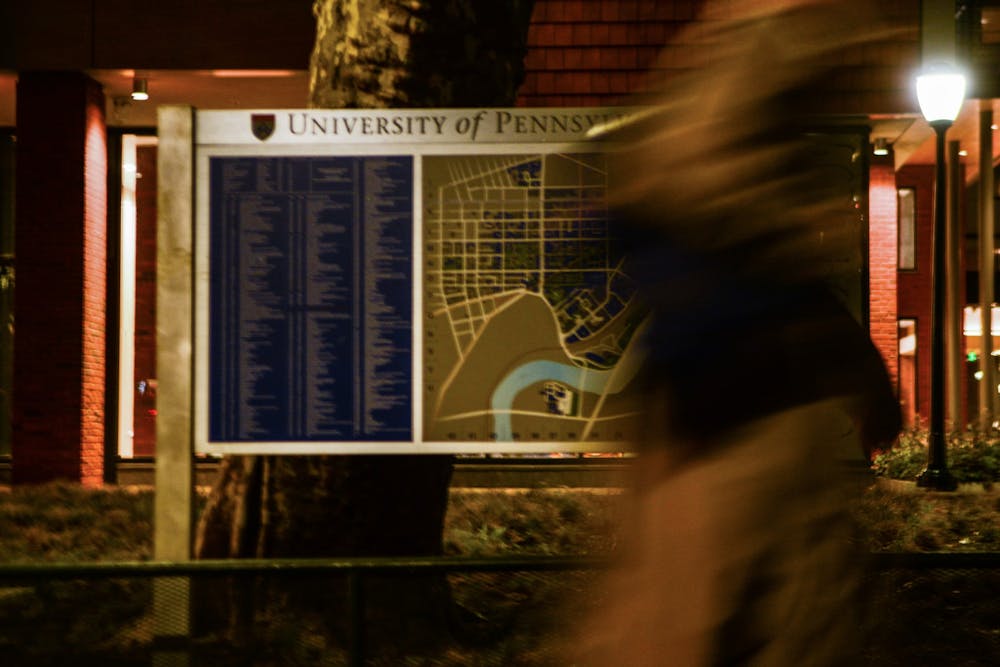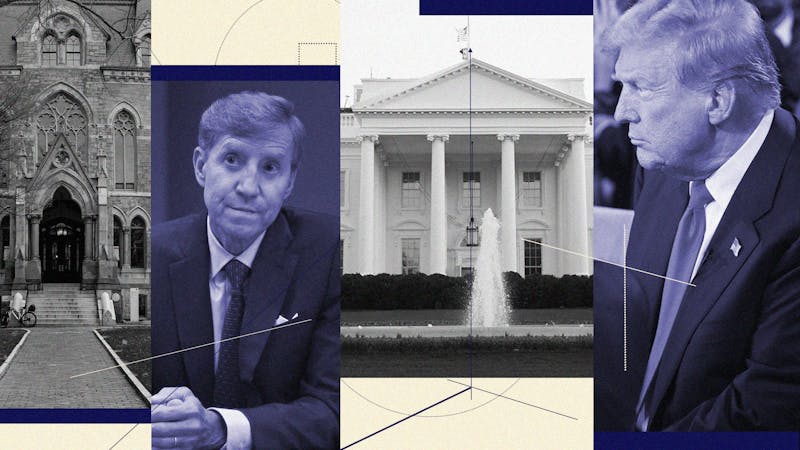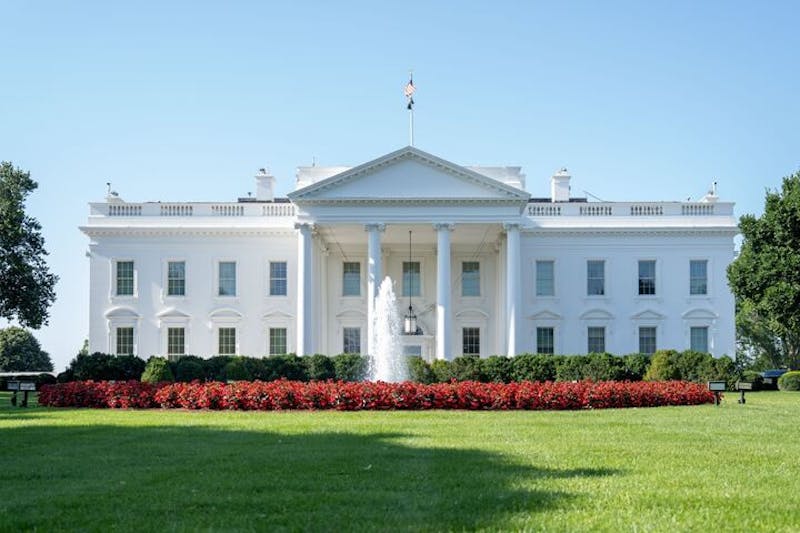
I listened closely as one of my peers described traveling back from spring break, apparently quite grateful there were no homeless people to avoid in the train station when she disembarked. I opened my mouth to ask why it mattered but quickly shut it, knowing the boilerplate response I would receive: homeless people are violent and dangerous drug-addicts.
Before I arrived at Penn, I thought I knew what I was getting myself into: a prestigious Ivy League that was insulated, self-contained, and chock-full of children of the rich and powerful. What I neglected to consider was Penn’s situation in Philadelphia, a big city plagued by pollution, crime, and poverty. Even more naively, I ignored how these two forces collide when students amble down Spruce Street, or take the SEPTA into Center City for Sunday brunch.
As soon as I moved in, I heard the run-of-the-mill complaints about the uncleanliness of the SEPTA and the alarming number of crime alerts. However, my peers disproportionately fixated on what some consider a mere nuisance, and others a pernicious evil: homelessness. Whether it was off-handed comments deriding a man asking for a hot meal, peers crossing the street to avoid a woman with all her belongings piled into a shopping cart, or social media posts expressing deep contempt for these same people, prejudice towards the homeless quickly became evident.
I was honestly surprised at the vehemence with which these opinions were communicated. Having gone to public school in the Baltimore area — a city with similar rates of homelessness to Philadelphia — homelessness was not new to me. Many at my high school struggled with homelessness and one of my closest friends was homeless for much of her secondary education. While my high school peers were not without their own biases, they didn’t approach the level of unfiltered prejudice towards the homeless which I have encountered on this campus. For the most part, my experiences are not shared across the Penn community.
This is a function of the fact that nearly three quarters of Penn students come from the top 20% and likely have not truly experienced vast socioeconomic diversity. And with more students from the top 0.1% than the bottom twenty, students who are most likely to have struggled with homelessness firsthand are woefully underrepresented at Penn.
Thus, on a campus dominated by the financially comfortable to ultra-wealthy, it’s no surprise that Penn students approach homelessness with degrees of ignorance. Many have little to no experience with poverty, and they are easily susceptible to the popular narratives surrounding homeless people — the same stereotypes which reinforce homelessness in the first place.
The obvious danger in accepting such caricatures prima facie is that in doing so, one neglects the diversity of experience which undergirds homelessness in America. In reality, homelessness occurs for many less visible reasons not necessarily directly connected to inadequate finances, including health issues, escaping violence, lack of housing availability, and generational poverty.
Regardless, this deficit of experience does not excuse the rampant ignorance I’ve witnessed on the part of Penn students towards the people we share University City with. Penn students would also do well to remember that most of us are visitors in this city for four years, while Philadelphia is these people’s home whether they are housed or not. Despite this, many consistently ascribe their monolithic, often ignorant and racialized, conceptions of homelessness to every woman asking for spare change or every man sleeping on a sidewalk grate.
Not only does this conception perpetuate largely untrue stereotypes, it reduces what is inherently a structural problem to an individual failing. The reasons this is dangerous are two-fold.
Firstly, this suggests to governments, both local and national, that they are not responsible for assisting people out of homelessness nor for creating the policies that have enabled homelessness to occur.
Second, generalized stigmas against the homeless have been shown to perpetuate ideas that they are less than human, worthy of disgust and contempt. Such hardline discrimination restricts the homeless’s access to basic necessities like health care, which has even larger implications when considering employment opportunities and the like. Thus, prejudice towards homeless people is a self-fulfilling prophecy which continually reaffirms its validity while exacerbating the phenomenon.
The point of this article is not to plead with you about why homeless people are worthy of basic human respect and dignity — why they are should be obvious. Nor is this an explanation as to why homelessness occurs. For that there is excellent literature by NYU professor Deborah K. Padgett, Atlantic contributor Jerusalem Demsas, and countless others.
Instead, I beg Penn students to reevaluate their stances towards those they have never attempted to understand. As future leaders who will go on to shape public policy and opinion, it is paramount they confront these harmful prejudices now, before encoding them into our nation’s fabric even more than they already are. Moreover, Penn students should take the time to interrogate why they feel the way they do towards the homeless and in doing so, take a step back and remember the following:
- Homeless people do not look or act one way or even have one story. Homeless people are people first and foremost — complex and varied — and by generalizing their presence as an urban problem, this reality is ignored.
- By understanding the structural causes of homelessness, as well as the institutional barriers to employment, healthcare, and social services, a more complete picture of homelessness comes into frame. Homelessness is a problem, but homeless people are not, and to conflate the two is to reduce very real people to an abstract issue in need of solving.
- If you listen to the pundits, the homeless are lazy, uneducated, violent, and drug-addled — and with no contradictory personal experiences, it's easy to adopt this view as your own. However, we must be cognizant of when people and groups are being weaponized or leveraged for political ends and why. Especially when the facts are at odds with the rhetoric.
This is clearly a non-exhaustive list, but it can serve as a basis for recentering the conversation around homelessness at Penn. The immense wealth of our student body means that there is understandably little firsthand experience with homelessness in its varied nature, yet this does not preclude basic empathy. In fact, this wealth actually necessitates more intentional and deliberate reflection since class-status, especially within the Penn bubble, can insulate people from the reality of life just outside campus while allowing prejudices to go unchecked.
When I hear people repeat bigoted opinions about homeless people, I feel angry — not for some abstract idea of homeless people, but for my friend who was homeless by no fault of her own, who is the hardest working person I know, who doesn’t do drugs and abhors violence.
Ironically enough, at the beginning of this article I intentionally didn’t list homelessness as a systemic problem plaguing Philadelphia, because the city has the lowest homelessness per capita of all large cities in the United States. While homelessness should be diligently addressed, the disproportionate fixation of Penn students on the homeless speaks to the biases widely held on our campus that must be deconstructed.

VINAY KHOSLA is a College sophomore studying history and political science from Baltimore, Md. His email is vkhosla@sas.upenn.edu
The Daily Pennsylvanian is an independent, student-run newspaper. Please consider making a donation to support the coverage that shapes the University. Your generosity ensures a future of strong journalism at Penn.
Donate






